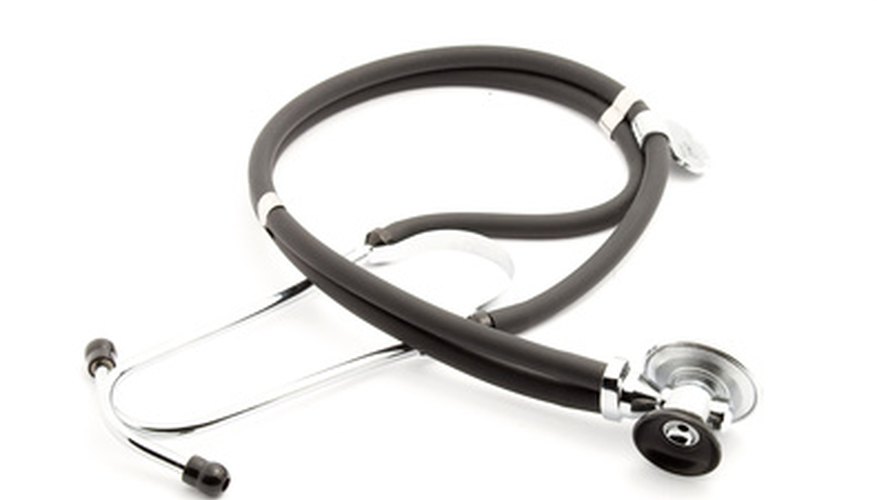Rene Laennec invented the stethoscope in 1816. Auscultation is the process of listening to sounds made by the internal organs of the body with a stethoscope. Auscultation is an important diagnostic tool for assessing a patient's respiratory function.
Patient Assessment
Stethoscopes measure respiratory rate. Begin assessment by creating a quiet environment. Always warm the diaphragm of the stethoscope with your hand before beginning auscultation.
Process
Place the stethoscope on the patient's chest. Count the number of breaths for one minute. The normal respiratory rate is 12 to 20 breaths per minute for adults, 18 to 24 breaths per minute for children and 40 to 60 breaths per minute for infants. Factors that affect respiratory rate include anxiety, depressant drugs, fever, hypoxia, pain and sleep.
- Place the stethoscope on the patient's chest.
- Factors that affect respiratory rate include anxiety, depressant drugs, fever, hypoxia, pain and sleep.
Assessment
Note the quality of breath sounds and the length of the inspirations and expirations. Listen for adventitious breath sounds such as crackles, rhonchi, stridor and wheezes. These could be indicative of serious respiratory problems.
